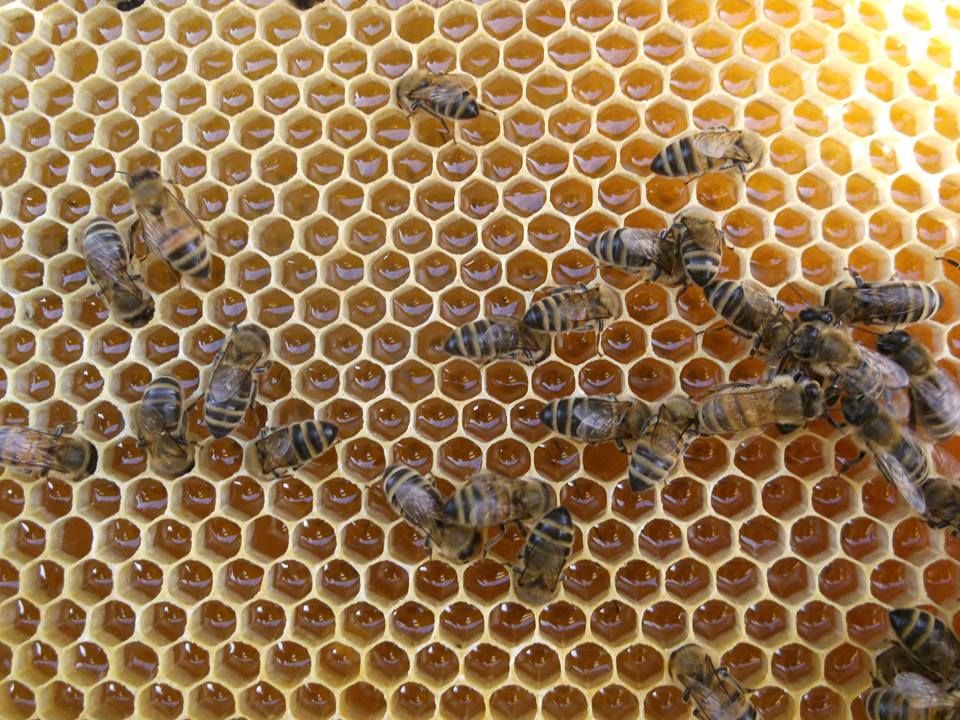
We all know bees collect nectar and pollen from flowers. The bees you see out and about on the flowers are actually the older bees and they work very hard collecting nectar which will be taken back to the hive.

Nectar will be sucked up by the bees and transported back to the hive in what is known as the “honey stomach”. Enzymes will be added to the honey and on arrival back at the hive the nectar load will be transferred to one of the younger house bees. The house bees will store the nectar in open honeycomb cells.

Nectar contains a high percentage of water and if left like this the combination of sugars and moisture would ferment. The bees now reduce the water content to below 20 % by keeping the temperature of the hive at 35 degrees and by fanning. Once the water content has been reduced to less than 20% the honey is now ready to be stored and the bees cap the honey over with a thin layer of beautiful white wax. This keeps the honey in perfect condition for the bees to use later.

Beeswax is typically produced by the younger house bees between 12 and 20 days old, although swarms of bees will rapidly produce of wax comb, because they need to get going quickly with somewhere for the queen to lay eggs and somewhere to store food. Bees wax is produced in the glands of the bees after they have consumed pollen and large quantities of honey. The bees will hang in strings and as wax is extruded from the glands of the wax producing bees it will be passed along the chain between legs and mouths, being chewed and moulded to shape. The bees will then use this wax to build the hexagon shaped honey cells we are all familiar with.
Producing wax takes vast quantities of honey. It takes 10 kilos of honey to produce a kilo of beeswax.
Bees will fly 90,000 (3 orbits of the earth) miles to collect 1kg of honey so a 340g jar is the equivalent of 30,000 bee miles. Next time you have an empty honey jar, spare a moment. Is there a little drizzle of honey in there you can scrape out? A 10th of a teaspoon of honey is the amount collected by one bee in her entire life so every drop is precious.







